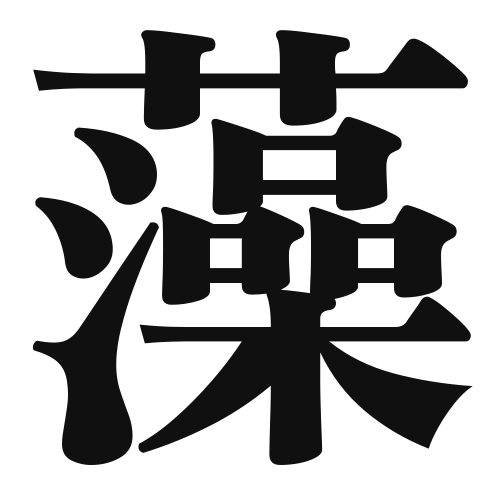1. Overview of Meaning
The kanji “藻” (pronounced “mo”) refers to “seaweed” or “algae.” It encompasses various types of aquatic plants that grow in water bodies, particularly in oceans and rivers.
2. Formation and Radical
Formation of the Kanji: The kanji “藻” is a phono-semantic compound (形声文字), which means it combines both a phonetic and a semantic component. The left part, “艹” (the grass radical), indicates that it is a plant, while the right part “藻” provides the phonetic sound.
Radical: The radical for “藻” is “艹,” which is commonly associated with plants and vegetation.
3. Examples of Usage
Common Words and Phrases: Some frequently used words that include “藻” are “藻類” (sōrui – algae) and “海藻” (kaisō – seaweed).
Example Sentence in Daily Conversation: “この料理には新鮮な海藻が使われています。” (Kono ryōri ni wa shinsen na kaisō ga tsukawareteimasu – This dish uses fresh seaweed.)
4. Synonyms and Antonyms
Similar Kanji: A similar kanji is “草” (kusa), which means “grass” or “herb.” While both refer to plant life, “草” is more general and does not specifically denote aquatic plants.
Antonym: An antonym could be “石” (ishi), meaning “stone,” as it represents a non-plant, solid object, contrasting with the living nature of “藻.”
5. Cultural and Historical Background
Relation to Japanese Culture: In Japan, seaweed is a significant part of the diet and is used in various traditional dishes, such as sushi and miso soup. It is also associated with health benefits.
Proverbs and Idioms: One common saying is “藻の中に魚” (mo no naka ni uo), which translates to “fish among the seaweed,” symbolizing finding opportunities in unexpected places.
